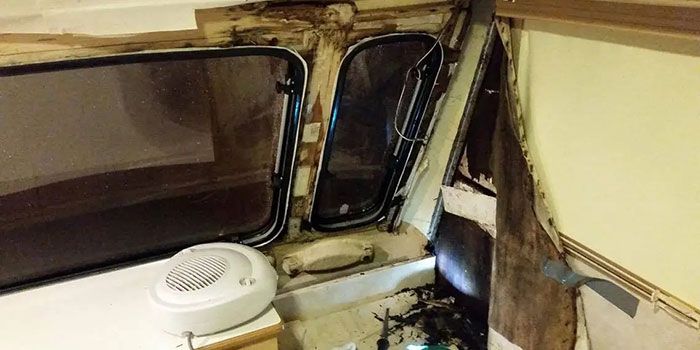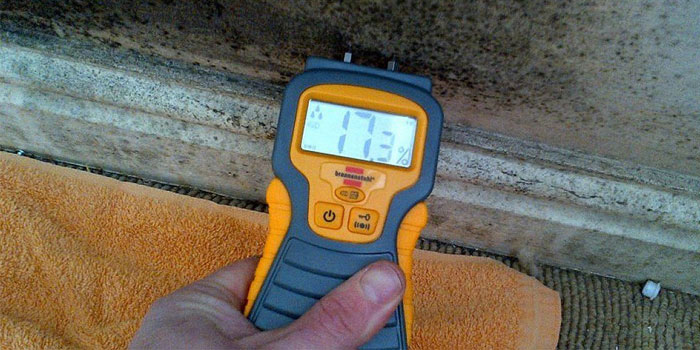
How to Prevent and Handle Damp in Your RV
Damp in a caravan is a caravan owner's worst nightmare. Not only is it difficult to deal with, but caravan damp repair expenses are the most expensive problem to resolve when compared to other issues such as mechanical problems and tyre changes.
How to Keep Your Caravan Dry
In the case of caravan damp, prevention is preferable to cure. Fortunately, keeping your trailer damp-free is simple if you follow a few simple precautions.
Detecting moisture and preventing possible problems is also important for you financially, as most caravan insurance policies do not cover the cost of the damage it causes.
Follow these procedures to avoid having to pay for the expense of correcting the problem later on:
- Purchase a damp metre: a damp metre measures the amount of water in the air. Any reading less than 15% is regarded as acceptable; there is no moisture in the air. You would want to look into it further if the percentage is between 15-20%. If the measurement is even higher after a few months, this indicates that there is definitely dampness within the caravan, and you will need to perform the essential examinations and repairs specified lower down in this blog.
- Instead of drying your clothing inside the trailer, hang them outside. Water vapour from clothing rises and can collect in the air, creating a breeding ground for condensation and moisture.
- Allow steam to escape readily and rapidly through open windows if you are taking a hot shower or boiling water for cooking. Avoid generating too much steam within the caravan.
- Increase ventilation by leaving cupboards, windows, and doors open when possible and unclogging any airways or grates. Condensation is reduced by moving the air.
- If you're going to be away from your caravan for an extended period of time, remove all bedding, mattresses, and pillows, clean out the showers and sinks, and invest in a waterproof but breathable caravan cover.
- In general, be sure to examine your caravan on a frequent basis throughout the year, looking for any signs of moisture as well as any spots where damp could occur, such as fractured pipes.
- Damp thrives during the rainy and summer months, so keep your caravan as dry as possible by heating it with a warm air fan or caravan heater.
How to Inspect a Caravan for Dampness
When you know what to look for, checking your RV for damp is simple. If you suspect damp, running through this indicator checklist will help you nip the problem in the bud and limit the damage from the start:
- A musty odour: The most obvious indicator of wetness is a mouldy, even swampy odour.
- Water stains are usually indicated by dark, wet patches on the walls and floor.
- Black mould on the seals of the doors and windows.
- Damp in the interiors is indicated by sponge-like walls: if you touch against one of the walls in your caravan and it feels soft, damp is present. A decent test for this is to knock on the wall; if the knock makes a dull sound rather than a forceful knock, you should look into it more.
- Look for any gaps in sinks or shower trays, split taps or showerheads, and breaks in work surfaces where water could escape.

What should you do if your caravan is dripping wet?
If your caravan has moisture, don't throw it away just yet; there are some repairs you can make to cure the problem. The best remedy for caravan damp is dependent on what created it in the first place. To properly treat dampness, first identify all of the problematic areas in your caravan and work your way from there. Look for the above-mentioned indicators, such as black patches and a spongy floor, in every nook and cranny of your trailer.
The following are some of the most prevalent causes of humidity in caravans and how to address them:
- Mould: Most mould may be removed with a mould removal spray or a DIY cleaning solution of washing up liquid and warm water, or half vinegar, half water. Never use bleach to remove mould. Apply some pressure to the affected regions with a scrubbing brush. Allow it to completely dry before filling a spray bottle with a tablespoon of clove oil and a litre of water and sprinkling it over the surface. If the mould is particularly large, you may need to hire a professional to remove it completely.
- Condensation: A dehumidifier reduces the quantity of moisture in the air, making the atmosphere drier and so making damp less likely. Excess vapour can be removed with dehumidifying crystals or even cat litter.
- Leaks through cracks or faulty seals: Once you've identified the source of the leak, determine if it can be repaired with a sealant or whether the pipe/roof/shower needs to be replaced entirely.
How to Dry a Wet Caravan
If water penetration has happened, drying out a damp caravan can be a massive undertaking, especially if the wood framework has been harmed. If the damage is minor, following the heating and dehumidifying measures to thoroughly dry out the caravan should suffice; however, if the problem has extended significantly, you should call a specialist like CaravanXpress.
An recognized expert will be able to conduct a comprehensive examination, advise you on possible next steps, and even carry these out for you using equipment that you would have had to acquire yourself.
How to Remove a Musty Odour from Your Caravan
There's a potential that the musty smell will linger after you've eradicated the mould from your caravan. Simple cleaning steps can be used to tackle the problem, as can products that can be made at home or purchased readily from home improvement stores.
- Wash all bedding, upholstery, and soft furnishings in your caravan thoroughly. Post-wash steam ironing blasts the clothes with heat, killing any remaining spores.
- Rip up any carpets and replace them with easy-cut mats or laminate flooring to prevent mould from growing on the floor in the future.
- Spread bicarbonate of soda across all remaining surfaces, such as countertops and walls, and then spray the same vinegar solution for mould removal over the top. The reaction between the vinegar and bicarbonate of soda should clean both the surface and the air. Vacuum the residue after 24 hours and leave the windows open for a few hours.
- To avoid mould build-up, perform a deep clean with mould spray on a regular basis and keep your caravan ventilated.
- Avoid hiding the symptom without addressing the underlying cause; if your caravan smells musty, don't just buy an air freshener; solve the problem and the odour will go away!